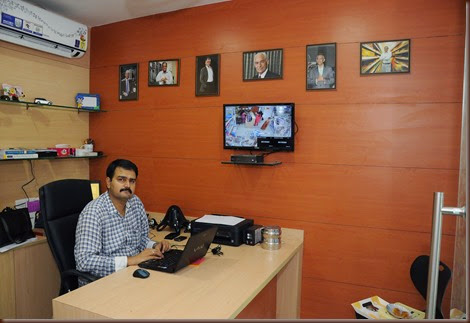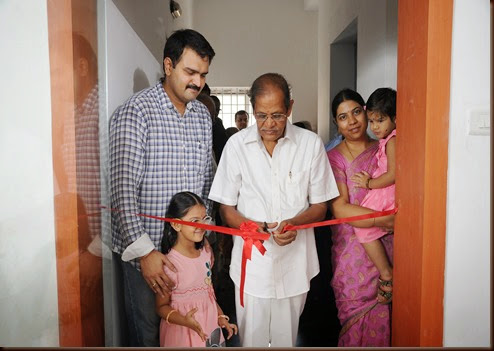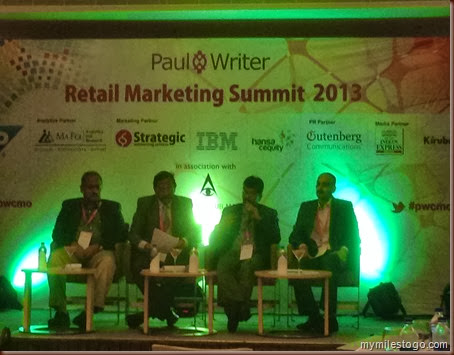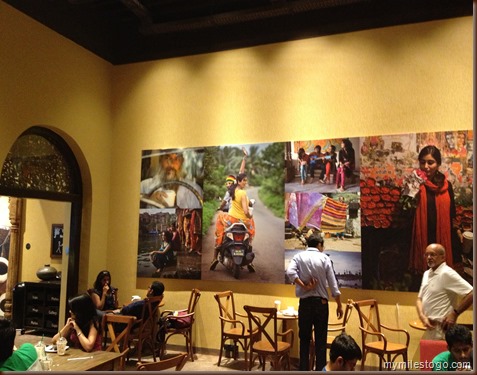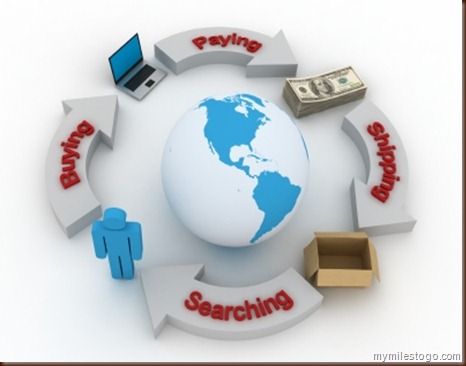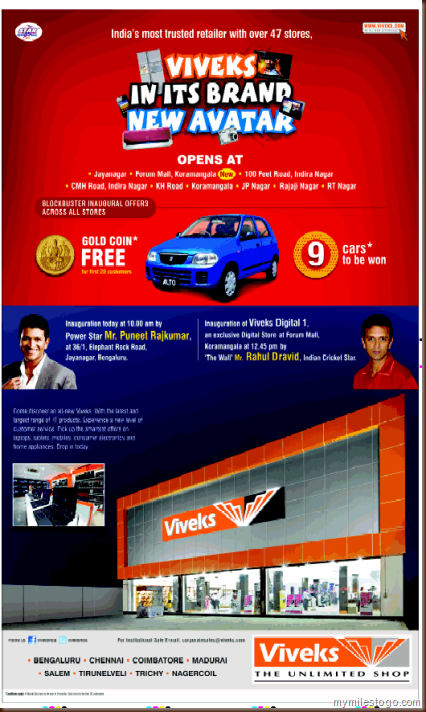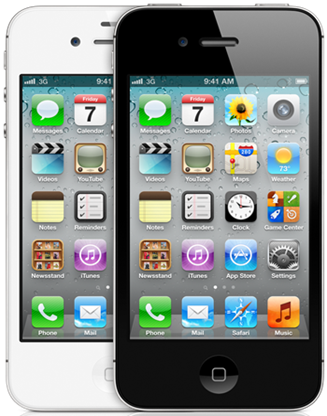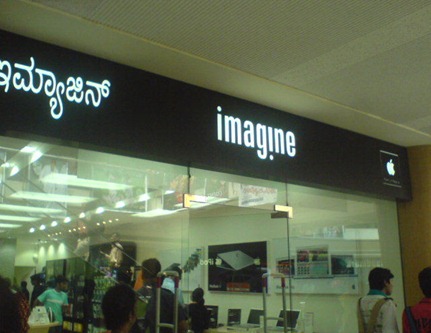11 September, 2016
Mistakes make you stronger
01 April, 2016
Casenation Bloggers Meet
31 March, 2016
FDI in Ecommerce
01 February, 2015
180 Days as an Entrepreneur
I started my entrepreneurial journey exactly six months back from today, on 1st Aug. 2014. The journey has been nothing less than a roller coaster ride. I have always wanted to have a company for myself, but for that to happen in 2014 was based on various conditions at workplace and home. The last six months have been super exciting – everyday has been a revelation. I set foot by creating a retail business for myself, Smiling Baby which is a baby care venture that focuses on a wide range for products aimed at newborn children upto six years of age and catering to the aspirational middle class to shop in an affordable, comfortable and convenient environment. Confluence Retail Private Limited was established on an auspicious occasion – Teacher’s Day, which fell on 5th Sep. 2014. It was a great way of me dedicating my efforts to my teachers and Gurus, my mentors and well wishes and to everyone who have taught me a lesson or two in my personal, professional and public life.
We inaugurated the (physical) retail store on Friday, 26th Sep. 2014 and the venture is seeing good traction. We are currently taking the next big leap of taking the business to the web, but it wouldn’t be yet another E-Commerce store selling diapers and creams at deep discounts but something more engaging and interesting.
Here are some lessons that I learned as an Entrepreneur which I would like to share;
- Time Management – From waking up in the morning to hitting the sack late in the night, time is at our own disposal. What we do with it completely depends on what outcome we expect out of it.
- Results are directly linked to the efforts we put in. Well, its the same while we work somewhere else, but most probably we are working in large or small teams. But as an Entrepreneur, we are working for ourselves and most often alone, or in a short team.
- Blame ourselves when things go wrong; probably try to put the pieces together and find out what went wrong, where and why. No Blame Game – no one to pass on the buck - to juniors, seniors or peers.
- Money Management is key – as important as managing time. While most Entrepreneurs start off with a buffer of savings, what we fail to remember is to keep maintaining or building the buffer from time to time to help you stay longer in the game.
- Trusting those around – this has been a great challenge for me. While we work for large organizations, we believe people will do their job. But when you are on your own, it requires a lot more monitoring and follow-ups.
- Getting compliments from your first time and repeat customers – gives us a high but also makes us to be more and more modest.
Some of the pain points compared to a professional life;
- After being in the Corporate world for a decade and a half, we expect a certain level of professionalism at work, which doesn’t happen in most cases.
- People walk in at their will at your office and expect you to value their time, leaving behind what we have been working upon.
- There is no respect for appointments – in most cases, we are taken for granted since we don’t carry a business card of a popular company!
- Money is always scarce, especially if we are used to a certain lifestyle.
- Friends and Family look up to us differently – as though we are wasting time without pursuing a full time job.
Overall, its been one exciting journey, a very long in terms of knowledge yet a short one in time. I have learned a lot more things in the last six months than in the past six years or so, probably. Setting up your own company, especially in the Retail world which has its own complications from Finance to Supply Chain, Marketing to Operations.
The journey has just begun and I have Miles to Go before I sleep…
21 September, 2013
Is there something as a Click-Only customer?
I was recently invited to attend the first edition of the Retail Marketing Summit Chennai, organized by Paul Writer, a leading consultancy which works in the Marketing space and advises various enterprises. The day was very exciting, with speakers from various Retail companies and Brands expressing their opinions. During the course of discussions, there was a topic which was discussed elaborately by the esteemed panel of guests as well as the audience. The topic of discussion was, whether there was someone called a “Click-only customer” that existed, who shops only online. There were ayes and naes but there was no single answer that could be fully validated. On the need for having an online presence and also focusing on the internet commerce business, Mr. Pattabhi Rama Rao, President of Australian Foods, which runs the Cookieman chain of stores felt that the market is too small at the moment on the internet and Retailers should continue to focus on the offline business by providing a better customer experience. In his own words, Man is a social animal and social interactions would never cease to exist. Pattabhi should be knowing well. With over a dozen years behind him in the Hospitality business, he started off the Cookie business 13 years ago. His brand of cookies were priced 10 times as that of a normal biscuit, although such a comparison is odious. He continued his focus in the business and now has over a 50 stores across the country. Most of his outlets are located in prime locations in Malls and Airports. Many of them bake fresh cookies at the store and the aroma spreads all over. It appeals to the senses and therefore converts a passerby into a customer, a customer into a loyalist and a loyalist into a brand ambassador. However, there is indeed an opportunity to sell categories like cookies online, although they are restricted to gifting and occasion based purchases.
In another panel discussion, Calvin John of Caratlane.com which specialises in the sale of jewelry products said that a customer has purchased 35 times in a few months from their site. And he felt that there were a small but growing species of “Click-only customers” who shopped extensively online. Jessie Paul, the convener of the event and also a moderator in one of the sessions confirmed this and said that she shops grocery extensively online at BigBasket.com, a Bangalore based start-up which has been slowly but steadily growing its online-only grocery business. With more and more people shopping online, it is all about convenience and discounts? Would the charm of shopping (at Retail outlets) dwindle over time? There are references to the West and how things have been changing in developed countries. A lady from the audience says that at Macys.com, sales were 37% of the total compared to just 26% in the previous year during the holiday season. And this was countered with a view that the sales increase was only during the Holiday Season when Macy’s was very badly organized at their stores. In India, the Books category was the first to succumb. Customers (in India) bought books online from Indiaplaza, Flipkart, eBay and the likes not just for convenience but also due to the generous discounts that were being doled out. But for those discounts, would customers have bought online? Perhaps yes, but a majority would prefer browsing and buying at their favorite books stores down the road such as Crossword.
The Internet Commerce business in India is still too small compared to the Offline one. As it is, Organized Retail in India is just under 10% of the INR 200,000 Crores market size. And e-commerce accounts for a decimal percentage of that. Although online retailers are showing double digit growth year on year, the business model is largely led by discounts and there is no hypothesis at the moment to prove that shoppers would still buy online at full prices, except for the gifting and essential categories. In my opinion, there is room for online and offline Retailers, But the bigger growth is offline, given the levels of broadband, internet and computer penetration in India. Payments gateways for credict cards, debit cards and Net Banking is quite limited too. In fact, I would place my bets more on m-commerce - shopping on smartphones which is still an untapped category. So, if you are a Retailer or a Brand, do build an internet commerce site now, if you already don’t have one. But remember, Retail is all about customer experience, and there is no better place than the store to demonstrate it.
26 March, 2013
Alternate ECommerce–Auction Sites
There was a cover story about Alibaba.com, China’s largest ECommerce company in recent issue of The Economist. Quite a few facts. That it is turning out to be one of the largest ecommerce companies in the world, with sales of over $170 billion, which is Amazon and eBay put together. That it has a financing division, viz., AliFinance which provides micro credit to small firms and consumers; and that it has 6 million vendors registered on its site. What was started in 1999 by the firm’s founder, Mr. Jack Ma, an English Teacher as a B-2-B portal connecting small Chinese manufacturers to overseas buyers has now transformed into an internet behemoth. “EBay may be a shark in the ocean,” Mr Ma once said, “but I am a crocodile in the Yangzi river. If we fight in the ocean, we lose; but if we fight in the river, we win.”Taobao, a consumer-to-consumer portal not unlike eBay, features nearly a billion products and is one of the 20 most-visited websites globally. Tmall, a newish business-to-consumer portal that is a bit like Amazon, helps global brands such as Disney and Levi’s reach China’s middle classes.
Indiaplaza, which was also founded in 1999 back home in India is unfortunately facing its toughest time yet. With over 80% of its 150+ workforce having quit over the past six months, the company which pioneered ecommerce in India has no takers today. With a weak b-2-c model based on product listing by various partners, the company has just not been able to scale up over the last few years, thus allowing late entrants like flipkart, myntra, jabong and coupon sites like snapdeal and groupon to surge ahead. To be fair to Indiaplaza, most of the Ecommerce sites in India are on deathbed, awaiting Angels to come and save them. The top three players, Flipkart, Jabong & Myntra with sales of over USD 600 million collectively are only making losses and there no signs of any profitability in the immediate future. Offline Retailers have had a slow start without much success in this arena. Croma, part of the Tata Group’s Trent Ltd., Crossword, India’s largest book store chain along with Landmark and Shoppers Stop, India’s largest Department Store chain are the only few large Retailers who have attempted an Ecommerce entry over the past years. With FDI in Retail not included for Ecommerce businesses, the Government’s backing has been minimal in this regard.
Even as I was thinking so, I came across an article which mentioned about an auction site named QuiBids (spelt as KweeBids). More out of curiosity, I set-up an account to know how this works. Registration was simple.GBP 0.40 is the value of each bid (for the UK Site) and can be bought online at the store in bundles that the user can choose, which in turn can be used while placing bids or while buying an item on the site after discounts and offers. The joining fee will be refunded in full or part thereof if bids are not placed for the said value. They have listed hundreds of items and all of them are on auction. The products are genuine and the processes are audited by Grant Thornton, one of the top audit companies in the world (I have personally seen the audit assurance report which is published on their website). One can bid an item only 5 minutes before the bid time comes to an end. Which means, users keep track of all those items on bid and are probably hooked on to the site all through, if they want to participate in the bidding process. Each time a bidder places a bid, the time slot for the auction increases by 20, 15 and 10 seconds in that order. If the number of bids the user holds is over, then he/she cannot participate in the bid anymore but the value in their account can be used against purchases. Also, the value of the product is discounted to the extent the bids are placed by users. Which means, if a product is priced at, say GBP 100, and the auction ends at GBP 32, with a discount of GBP 9, then the user can buy the product for GBP 91 (less the value that is already in the account). Shipping is charged depending on the size and weight of the product. All in all, it is a win-win for the company and the user. The company makes a thin margin on sale of such products while the loss on bid money is usually written off against a publicity fee paid by the brand to feature their products. And on top of it, users also buy the product which is at a discount for them but which fetches a margin for the company. In addition to this, users may also buy “bids” for set values, so as to keep on bidding. At the end of the day, a user will only gain from the tremendous discount that he gets out of the product even after buying bids.
The prose above may not be fully convincing, so do log on to www.quibids.com to explore.
According to their website,
“QuiBids was started in July 2009 as an attempt to improve the Internet auction model by making it more exciting, safer, and more reliable. We're based out of Oklahoma City, Oklahoma and our goal as a business is simple: To provide an exciting online auction model with better deals for the consumer than any other website in existence."
You can win all sorts of popular products at incredibly low prices. Look at our homepage to see what products are up for auction right now, and if one catches your eye, buy some bids for a low price! When you place a bid, we add a maximum of 10-20 seconds to the timer - to give someone else the chance to bid if they're interested. This is similar to the "Going Once...Twice...SOLD" approach of auctions.
If no one else bids and the timer reaches zero, you’ve won a sweet deal on QuiBids! If you don't win the auction, you never have to go away empty handed. Any time after you've placed your first bid in an auction, you can choose to buy the product for a discount using the Buy Now feature. This will help limit your losses so you don’t have to leave all your bids on the table. You’ll never have to pay more than the Value Price for any products on QuiBids.
I have never come across such an exciting business model which I can comfortably say is an alternate Ecommerce model. There is hardly any publicity that I see for this company or for this form of Ecommerce and yet there are hundreds of dedicated users who are constantly bidding to win their favorite products at rock bottom prices. I guess the typical profile of the customer would be in their 20s and this is almost like a contest for them! Internet penetration is quite important for the success of this model and I presume the success of this model in western countries, which is not so the case in India where most of the internet consumption still happens at workplace with curious onlookers peeping into each others’ desktops and laptops. With Wifi (at home) using the iPad and other tablets and 3G on mobiles such as the iPhones by Apple and Blackberry gaining popularity coupled with the deeper penetration of Android smartphones starting at $ 100 (Rs. 5,500), chances are more young ones in India will appreciate and participate in such promotions in times to come.
Indian Ecommerce players need to reinvent themselves to stay ahead in the game. Afterall, everyone remembers who is the biggest of ‘em all, and not really the one who started. Such is life.
22 March, 2013
Free Wifi will be a crowd puller for Retailers
I was at the Starbucks (SBUX) outlet in South Mumbai a few days ago. SBUX, in a JV with the Tata Group opened their first outlet in India in South Mumbai a couple of months ago. We had a long day ahead and decided to start our first meeting at this location for the sheer purpose of convenience. And ofcourse, some good coffee. Not awesome coffee, atleast for me. For which I would go back to Café Coffee Day, India’s largest café chain with over 1,400 outlets across the country which in my opinion still brews the best coffee in town despite lapses in service levels here and there once in a while. I was pleasantly surprised that the SBUX outlet offers complimentary wifi to those who wish to have a sip or grab a bite and spend time around at their cafe. Ofcourse, for me it wasn’t the reason why I chose my meeting venue there. But then, anything complimentary is welcome in this mean world, I say. So there I was, connecting all my three devices – the laptop, the iPadmini and the iPhone on wifi sponsored by Tata Communications (I felt it was a great marketing opportunity for them although they didn’t seem to use it as well as they could). I was online for over half an hour, finished my emails for the morning and was all ready to step out for my next meeting. The staff at SBUX, as friendly as they were, cheered every customer who walked in or walked out with a customary welcome or thank you respectively. Even as I was walking out, I wondered how happy I was as a customer using complimentary wifi at the café. I have a USB Data Card for my laptop, 3G for my iPadmini and iPhone. But then, its sheer convenience and speed to use wifi.
I have been extensively travelling since Aug. 2012, ever since I joined Royal Enfield where I am responsible for Dealer Development and expansion of other key pet projects for the company. I book my hotels myself, mostly on my Make My Trip Mobile App for the iPhone or on their website although the former is quicker and handy. While most of the hotels provide complimentary wifi in their rooms, only a few work seamlessly. It is usually patchy and the front office staff are usually unable to resolve the connectivity issue blaming it either on the service provider or sometimes on my device! (Yes, at a Delhi hotel, the staff claimed my iPadmini was faulty). These days I look for reviews on sites like Trip Advisor while choosing a hotel that provides complimentary wifi. And most reviews are correct and genuine, as I have experienced.
That set me thinking, what if other Retailers provide Wifi to their customers. Would it bring additional walk-ins? Would it increase the stickiness? Would shoppers be showrooming – a term used for browsing the store for products and buying them simultaneously online, thereby increasing ECommerce? If so, would it help Retailers like Shoppers Stop and Landmark Book Stores which have a strong offline/online connect? I guess there are no immediate answers. Large Department Stores in the West have a café within their store so bored husbands and boyfriends could have a cup of coffee or a mug of beer while their wives/girlfriends are shopping. These days, my friends who live in the West tell me that Wifi is almost free everywhere around, which prompts them to choose a location for their need – be it a restaurant, a café , a book store or any other format of Retail. In India, unlike in the West internet bandwidth is minimal and the speed is not all that great. Cost wise too, it isn’t worthy for most Retailers to offer it free especially for those shoppers who just pass by and not really spend at their stores. Bangalore International Airport, where I worked many years ago was the first airport in India to offer free wifi for one hour to passengers passing through the airport. And most airports in India follow the trend albeit for a shorter duration. Atleast, large Indian Retailers should try this concept. With increased penetration of smartphones and tablets, there is abundance usage of data these days. Lousy 3G speeds by most Indian mobile networks mean an alternative connectivity which is what wifi is all about. Facebook and Twitter updates by the minute are not uncommon for those who are hooked on to their devices.
It’s just a matter of time that free wifi would become the thing of the day. Even now, I am sitting at another airport lounge while transiting from one city to another. And yes, this article would be published using the free wifi. Stickiness, I would say that I visit the lounge as often as I could, and just because of the complimentary boring food. If only the Lounge was more exciting with various marketing promotions other than the TV which is blaring music and bollywood gossip from one leading Indian channel just because they probably provide free Televisions!
10 January, 2013
E-Commerce Economics–Questionable?
I have been without a pair of floaters / slippers for over two months now. Just that I’ve not been able to find a Retail Store closeby where I could find a couple of options. And I have another peculiar issue – that my foot size is 11 and I don’t get options so easily across brands. In fact, I ‘ve been buying my shoes from Brand stores located in North India since the body/foot sixe of customers is generally larger there than in the south (and it applies for other forms of retail such as apparel such as shirts, trousers, shorts etc. and even accessories such as caps and belts. In the month of Dec. 2012, I was traveling down siuth towards Coimbatore, Karur, Bangalore and a few others and then was in Bihar for a couple of days before ending the year in Kerala for a vacation with the family. And in the new year, I finally decided that I need to get a pair of footwear immediately. A chance view of an eadvertisement on some news website took me to jabong.com which offered a 70% discount on a particular model of Lee Cooper floaters and thankfully, they had my size as well. Bingo, and I ordered my pair immediately. The entire transaction from browsing to selecting the size to payment confirmation and then finally the payment gateway took me all of 6 minutes flat. And yes, this happened not on my laptop but on my iPadmini what with its fast processing speed and convenience to hold. I was quite pleasantly surprised that jabong.com had its web page optimised to the tablet – given that the size of the ipadmini is considerably smaller than the regular iPad. Within a few minutes, I received an SMS confirming my order and that the folks there were working hard to get the product to me as soon as they could. This was at 9.45pm.
When I woke up the next morning, there was an SMS as well as an email that the product had already been shipped – and they shared a tracking number as well. Around 11am, I received an SMS that the product had reached Chennai (from Delhi where their main warehouse is located) and that it was on its way to my home. Around 1.15pm, the product was at my doorstep, neatly packed in its original box with an outer covering that was branded “jabong”. I was indeed delighted to get the product and wear it – was happy like a kid who received a new toy. From shopping to receiving the product it took less than 18 hours which I felt was simply superb. Impeccable Customer Service.
After a while, I was thinking about the economics of the entire business model. The product was at a 70% discount, so I would guess the e-tailer had a 5-10% margin if at all, had a warehouse to stock the product(s), a team that was working overnight to process the order, pack and ship it immediately and a shipping agency that delivered the product free of cost at my doorstep! No to mention the operational costs of running an e-commerce company. Well, was this worth the effort? Ecommerce specialists (and there are tons of them out there) call it the cost of acquisition – that a customer who once shops on their website would get used to the idea of shopping online and would indeed come back to them and buy once again in future. Atleast that’s what most of them in India have been doing for the past few years. But that isn’t the case. Various studies have shown that e-commerce loyalty is negligible in India (as is mostly the case outside too) and most customers who shop online are seeking better price and convenience of shopping rather than looking for a full range of products. Another recent experience confirmed this too. On 12-12-12, a book was released to commemorate the birthday of Tamil Film superstar Rajnikanth. The name of the book is “Rajnikanth – the Definitive Biography” by noted journalist and author Naman Ramachandran. I was wanting to get my hand on this book for quite some time, just that I was hoping there would be a kindle version so I could read it on one of my devices. But that doesn’t seem to be launched yet. So, I decided to buy the hard copy paper back which was priced at Rs. 699/- at Landmark, the retail venture of the Tata Group in India. Landmark is a specialty Retailer and mainly sells books and stationery, music, toys etc., among other things. There wasn’t any discount on the book – given the fact that many hard core fans such as me would buy it whatever crazy price.
While I was browsing the internet on Sunday evening at home, again on my ipadmini, I was curious to check out the price of this book online. To my surprise, the same book was being offered at a 30% discount across various online retailers. And I chose to buy from flipkart.com which claims to be the largest etailer in India in terms of number of billings/shipments and turnover. I bought the book immediately, my second ecommerce transaction on a hand held device within a span of two days. In this case, the shipment wasn’t as quick as in my previous example. The order was processed on Monday noon and the book arrived at my home on Tuesday. I had proposed COD (Cash on Delivery) – and hence the product would be paid for only after delivery. The delivery boy was kind enough to call me on my mobile while I was at work since there wasn’t anyone at home, After sorting out the same, the book was handed over to someone at home. And pronto – I get an SMS in a while from Flipkart – that the book was delivered to a family member. Technology used to its best, I felt.
Again, there wasn’t any logic for Flipkart to sell it so cheap – if they would lose 30% margin for a transaction (and most items on their site are on discount), then where do they make money? Assuming that their Gross Margins is around 40%, this is a ridiculous business format, to say the least. Over the months, PEs and Investors have shunned away from encouraging E-Commerce businesses in India. A prominent Indian etailer which was also one of the earliest to pioneer the concept of online shopping seems to have run out of cash and hasn’t paid salary to its 100+ staff for over two months. Half a dozen of them have either shut down or been bought over by their peers and competitors during 2012. And many more will go out of business in 2013. I am neither a prophet or a pioneer to predict what would happen to the fate of such businesses but when an etailer is operating at –15% or more (negative) margin, then isn’t it logical to say so?
29 June, 2012
Another New store Opening?!?
Retailers in India seem to be continuing their efforts to open new stores, despite a slowing economy, higher import values, a falling rupee, increasing inflation and a weak consumer sentiment. This has been evident in the Retail Sales over the last two Quarters of this calendar year especially in high-value items such as A/Cs, Refrigerators, LCD TVs, automobiles including two-wheelers and four-wheelers. On one side, Retailers are offering huge discounts to lure customers – in India, Q1 & Q4 (for Financial Year starting April onwards) are essentially the most difficult times for clearing inventories and it is relatively easier in Q2 & Q3 due to the impending Festival and Marriage seasons. The above mentioned macro-economic factors haven’t helped them either. And Product ECommerce (excluding Ticketing services which account for over USD 8.5 Billion) which is estimated at over USD 2 Billion (approx. Rs. 11,500 Crores) is the biggest competition today for many Brick & Mortar Retailers, at least in the metros and mini-metros where Consumers have a reasonably quick and safe internet connectivity. And on the other side, large stores are being inaugurated in the hope that consumers would still like to visit and shop. We truly live in two contrasting worlds, to say the least. India's largest retailer, Future Group, which runs Central Malls, Pantaloon Fashions – a Department store chain, Big Bazaar Hypermarkets and FoodBazaar supermarkets among various other formats and models has scaled back its expansion from 2.5 million to 2 million square feet this fiscal year due to an economy growing at its weakest in nine years. The growth rate was 5.3 percent on an annual basis in the March quarter.
To drive footfalls to the store, continuously and consistently is one of the key challenges for Retailers anywhere in the world. That the population in India is huge is a bonus factor. However, conversions are miniscule. In the apparel and lifestyle formats, conversions range from 8-15% (those who buy as against those who enter the stores) while in consumer durables and brown goods, it is even lower. For Malls, which are destinations and are expected to attract significant footfalls, the conversions range from 3-5% and maybe lower in some cases (on a lower base of footfalls, usually). Given this fact, Retailers are in a frenzy opening newer stores within existing cities as well as in newer cities. One such example is Viveks, one of the oldest Consumer Durable Retailers in South India which was also the first one to start an EMI option in the early 90s when the Indian Economy was just opening up. It is rather surprising that the Retailer chose to remain a regional player, unlike its later counterparts such as EZone (part of Future Group) and Croma (from the house of Tatas) who quickly increased scale and went national with their presence. EZone is having operational challenges but that is not because of expansion but rather due to internal issues. To add to the woes of Consumer Durable Retailers, Hypermarket Chains such as Hypercity, Big Bazaar, Star Bazaar, etc. also stock Electronic Goods.
Challenges for Consumer Durable Retailers
Footfalls
To expect continuous footfalls all through the week is rather not practical. Instead, Retailers focus on weekend shopping festivals, usually for short durations. This is the time when Shoppers visit Retail stores and chances of conversion are higher!
Service
Superior Customer Service is something everyone talks about but is not generally followed all the time. And Customer Service is not just a gentle staff doing some smooth-talking and smart selling. It includes all the moments of truth – from hygiene factors such as lighting, A/c, Parking, etc. as well as product knowledge and friendly staff.
Differentiation
Multiple Retailers sell the same Brands and products. So why should a customer actually shop with one Retailer and not with another? Honestly, there is no clear answer. Consumers do not buy products, they buy Brands. And this includes the Retailer’s Brand Value as well, on which they should be focusing on.
Ecommerce
Showrooming – a prevalent concept in the West where shoppers visit Retail stores to check out products and prices but ended up ordering on Amazon.com or other ECommerce portals is brewing in India too. So, the difficulty of touch-and feel is negated. Another challenge is paying by Cash which is also something that ECommerce players have started over the recent months. Lastly, the convenience of getting the product on hand immediately – something that ECommerce players are finding it difficult to deliver but are successfully meeting customers’ requirements within 2-3 days in general.
With so many challenges, I wonder at times whether Retailing is worth the effort at all. For some, it’s a question of growth, for many it’s a matter of survival. With the opening of FDI in Retail sooner than later, the Big boys with boat loads of cash are going to lap up market share easily and faster. Interesting times ahead.
04 May, 2012
Apple–Smart Product or Smarter Retailer?
After a lot of careful consideration over the past few months, including reading various literature online and discussion with friends and users of the iPhone, I finally decided to take the plunge. Yes. Now I own an iPhone 4S 32 GB. So, what? Actually. It is just another phone, in my opinion. It is indeed a true case study of how an ordinary product can be made an extraordinary success with simple, yet effective Marketing. One must learn from Apple in this regard. Much has been written about the technical specifications, uniqueness and superiority of the iOS of the iPhone, the Siri and various other features and hence I wouldn’t delve into it. Nor am I a technology expert to rip through comparisons with an Android phone (from Samsung or HTC ) or a BlackBerry or a Windows Phone. Oh yeah, by the way there is Nokia too. Apple iPhone 4S, for me lacks some basic stuff – such as a favourite tune as an alarm; select many / select all in the email box to delete and many such small features. Wonder how the Apple engineers skipped these and a bigger wonder that Apple Marketers kept them low-key, promoting various other features. It is a good smartphone but can be a lot better. Will leave it there.
10 days ago, I ordered my iPhone online – through www.indiaplaza.com where I work. Not just because of a particular loyalty – but also because of the Price. The phone is about Rs. 2,000 (USD 40) cheaper while buying online, compared to the ones sold at an Apple Store or other Electronic Retail chains such as Croma (from the house of Tatas), Ezone (part of the Future Group), Reliance Digital, etc. Two months ago, I bought an iPod Touch (also from www.indiaplaza.com) and the price online was a lot cheaper – I got a 10% discount while the company was celebrating the birthday of Apple founder Steve Jobs. In my view, the iPods, iPhones and iPads should also be sold through Department store chains such as Shoppers Stop and Lifestyle too. After all, it is indeed a lifestyle product as promoted by Apple and not just merely a gadget. The Apple stores are more a novelty than being electronic stores. They are a lot more engaging, inviting and most importantly (well stocked). And I am referring this from an Indian context.
I visited the Apple Store twice in a span of two months to buy accessories for my iPod and iPhone. Every time, the staff have delighted me. They speak little, but with a lot of sense. I have already bought Rs. 10,000 (USD 200) worth accessories from the Apple Store and I believe it is only because of the wonderful staff interaction that I have had each time. On the first instance, I wanted to buy a case and screen guard for my iPod and the staff showed me gladly all the varieties that they had – without indicating any obligation on me to buy. I walked up to two nearby stores that also sold mobile accessories to check out what they have – at one store, the staff was busy canoodling with his girlfriend (I guess) on the phone and had least interest or respect for the customer who came to spend money. At another store, they had stocks for every damn model but an iPod. The staff felt sorry but couldn’t offer anymore. I came back to the Apple store and ended up buying from there. I repeated my visit a month later – this time to buy a screen guard and a case for the iPhone. I visited various other electronic retail stores who didn’t stock them, and were more interested in selling larger items such as LCDs, Washing Machines and Refrigerators. Even Croma, which is known to stock a wide range of accessories wasn’t carrying anything specific for the iPhone.
Back at my favourite Apple store at the Forum Mall (Bangalore)m Simran, the sales assistant was not just being polite and interactive but was also non-obtrusive. She allowed me to have a look at things, touch and feel them and never got perturbed by the questions that I enquired regarding the various options. She was happy to answer as many and even offered a few ideas such as a “Matt-finish” scratch guard that would not leave traces of oil from the face and which is easy to wipe off. She suggested a case that not just matched with the phone but was sleek and had a good form factor. Amongst other things, she also showed a few headphones and a couple of JBL speakers. And eventually, I ended up buying a noise-cancellation Apple ear phone worth a 100 dollars (Rs. 4,800) which was completely unplanned! All in a span of a few minutes. Now, that’s what I call “engaging customers” smartly. She knew my preferences for music, realised I had an iPod Touch and an iPhone and that I could, most importantly – appreciate and enjoy the stuff that they make and sell. Hats off to their level of knowledge and customer service. Next on my list: JBL Speakers for the iPod.
I have been using a Samsung Galaxy Tab for the past one year and a BlackBerry for over 3 years. Its been just over two weeks since I have been using the iPhone. Happy with it. But would go back to my BlackBerry any day. I am just that. But all said and done, Apple is not just a product maker but also a smart Retailer. With its unique offering of products, they seemed to have mastered the art of letting customers engage with their products. Single Brand Retailers have a lot to learn from them. Of how not to sell, but to make customers buy the products. And appreciate them all their life. Kudos Apple.
26 February, 2012
eCommerce in India -
A Firefly finally takes off
Monday - 22 Jan. ‘24 is a very important day in my professional life. I complete eight months today in my role as Executive Vice President a...

-
12 December is celebrated annually as Retail Employees Day, an occasion to thank the frontend staff who have taken up Retail as their pref...
-
The world is split into two for the last week or so, ever since India’s self-made billionaire and tech mogul Mr. Narayana Murthy (NRN) said ...
-
It’s been over 5 months since I wrote anything on this blog, especially. Not that I didn’t have anything to observe, even better to share my...










